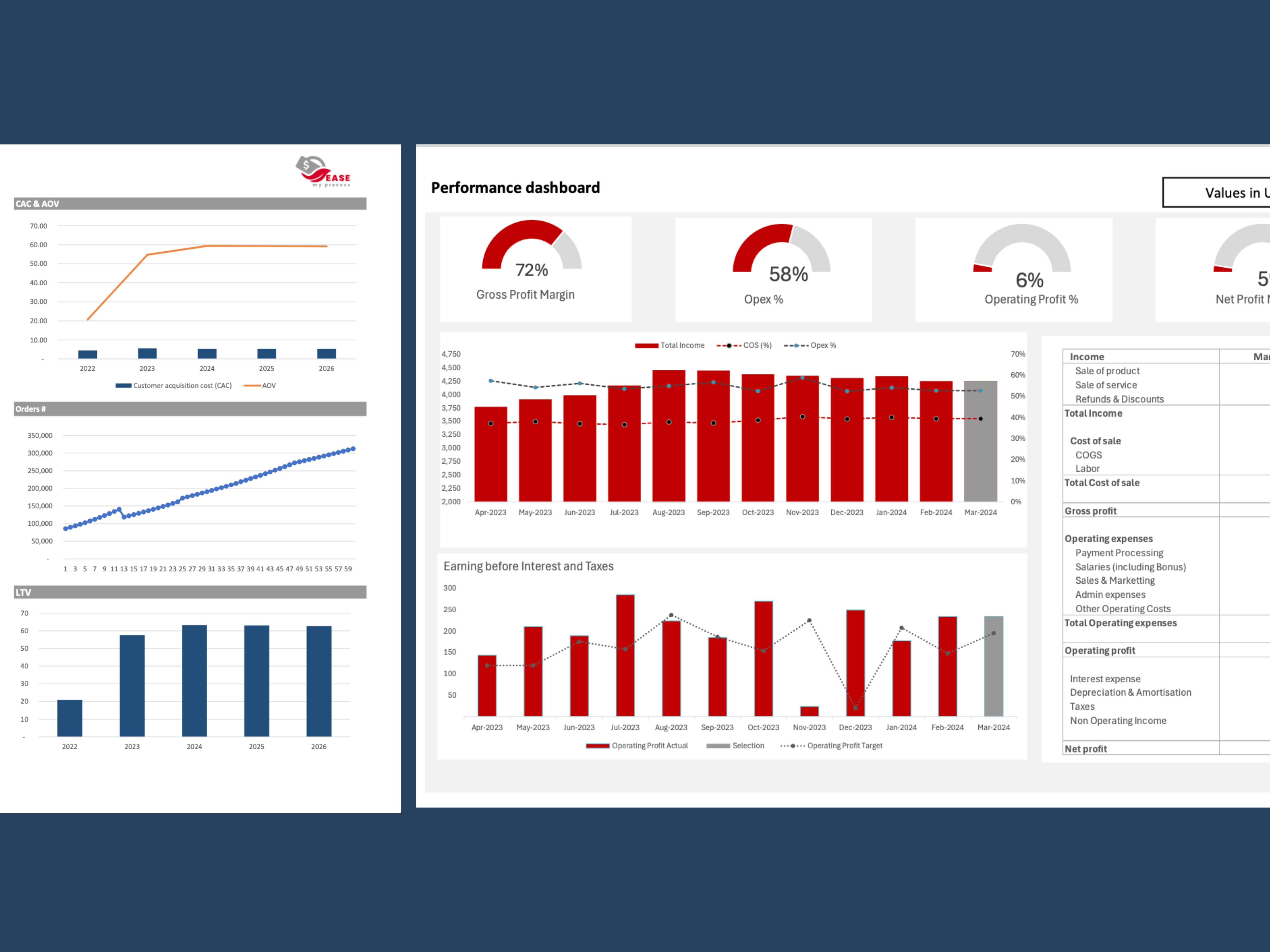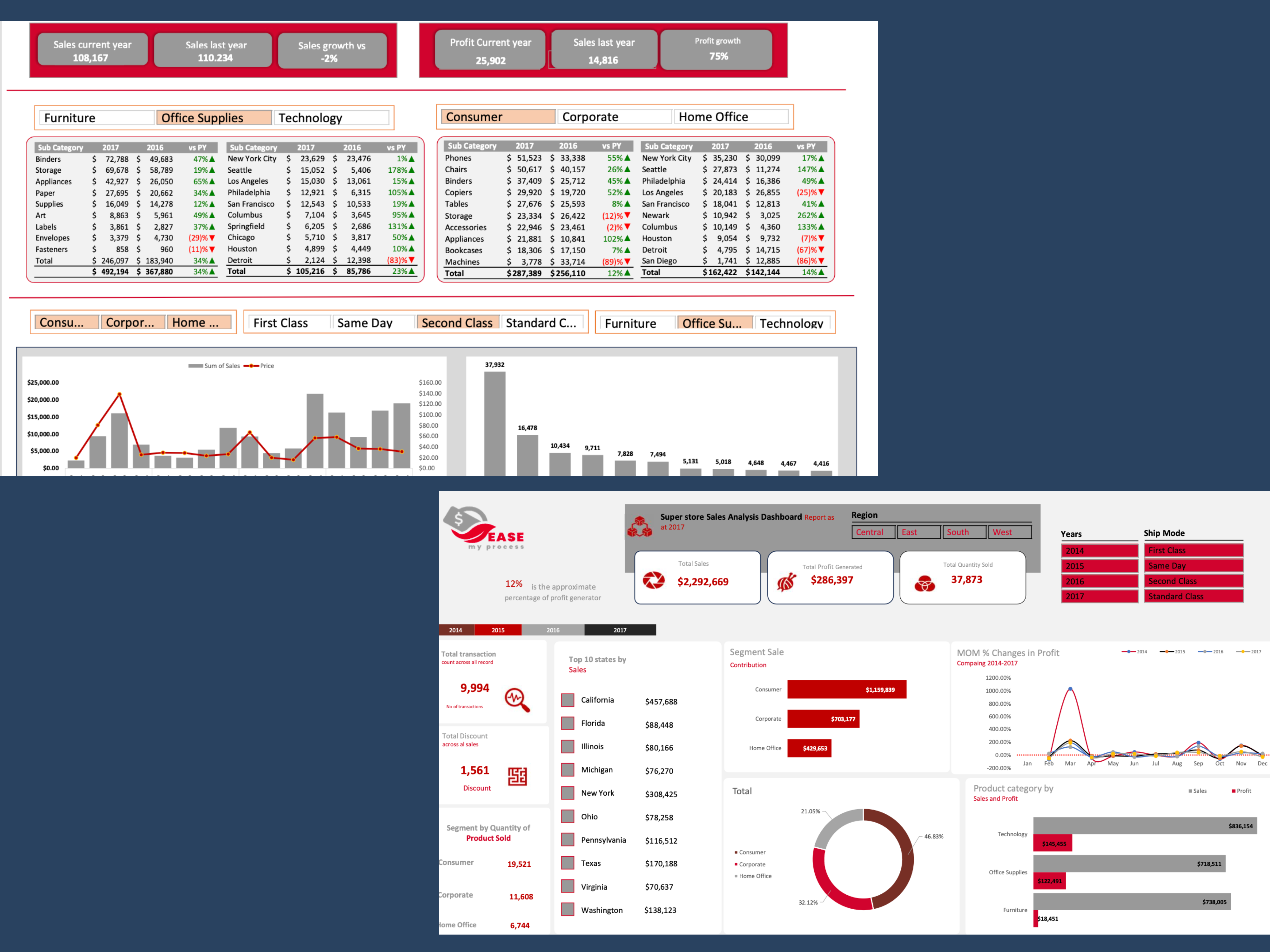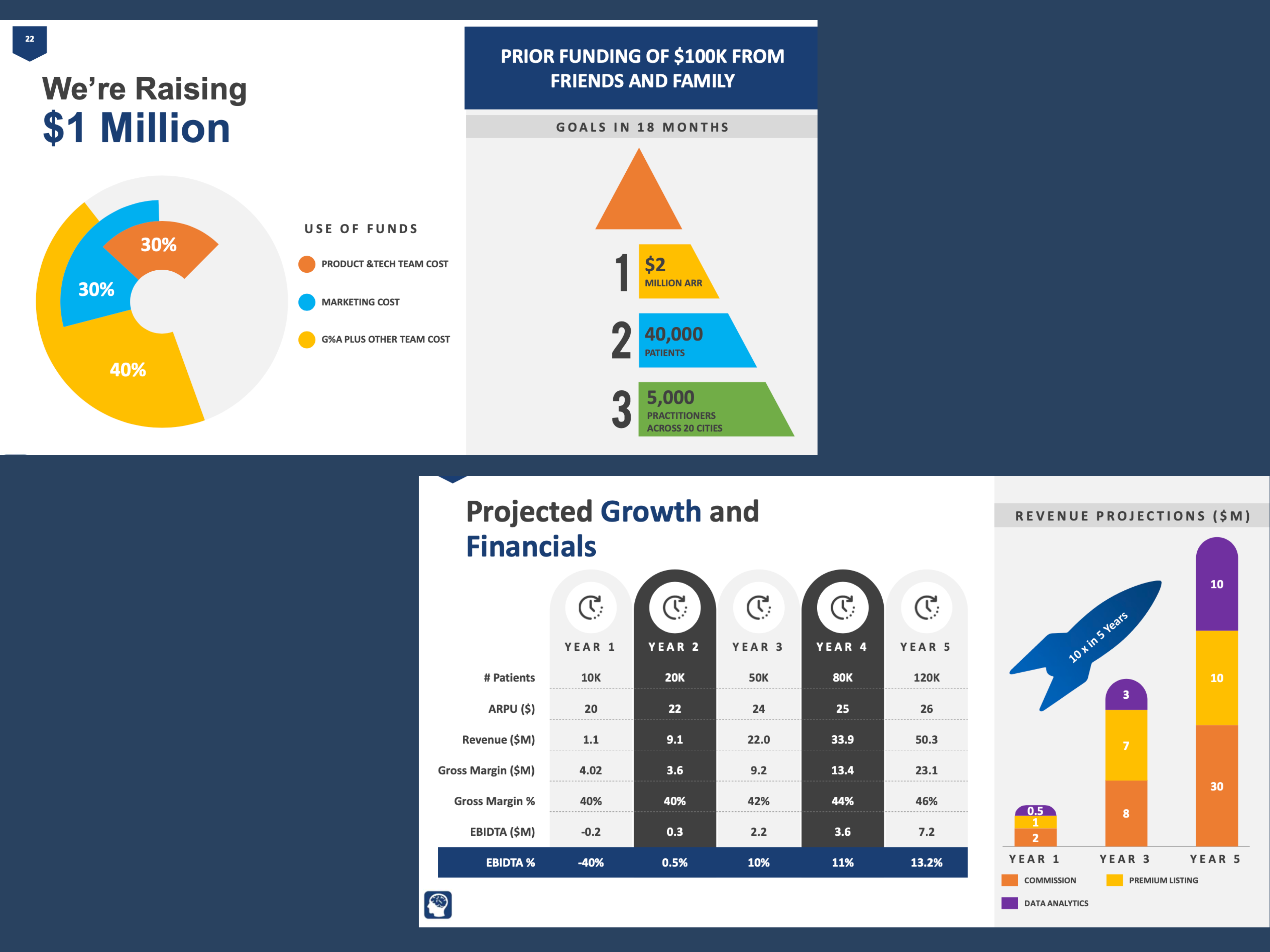Ease My Process.
Your Business Growth Partner Inventing Your Growth Strategy
Need Funding?
Want Financial Control?
Did you know 82% Of start-ups fail due to poor financial management? Let our team help you in achieve financial success.
Quality Assurance
Trusted by
Top firms
Client Satisfaction
98%
Approval rate
75% increase in deal closures
with our investor ready
pitch-deck and financial models
Process efficiency
save upto
60%
Expert Team
Led by
Experienced platforms
Services
Client served
by our core team members
Our Portfolio

Business Valuation

Financial Modeling

Financial Planning & Analysis

Pitch deck
FAQs
Besides TAM/SAM/SOM, what other market sizing metrics are important?
Other sizing metrics are:
● Customer Acquisition Cost (CAC): The cost of acquiring a new customer, which helps understand the efficiency of your marketing efforts.
• CAC Formula: CAC = Total Customer Acquisition Costs / Number of Customers Acquired.
• Example: If your company spends ₹100,000 on marketing to acquire 100 new customers, your CAC would be ₹1,000.
● Customer Lifetime Value (CLTV): Represents the total revenue a customer generates throughout their relationship with your business.
• CLTV Formula: CLTV = Average Revenue per User (ARPU) x Average Customer Lifespan.
• Example: If your ARPU is ₹500 per month, and the average customer stays with you for 2 years (24 months), your CLTV would be ₹12,000.
● Market Share: Reflects your company's portion of the total market compared to competitors.
• Market Share Formula: Market Share = Your Company's Revenue / Total Market Revenue.
• Example: If your company generates ₹1 million in revenue in a month, and the total market revenue for your industry is ₹10 million, your market share would be 10%.
● Customer Acquisition Rate (CAR): Indicates the rate at which you acquire new customers over a specific period.
● Average Revenue Per User (ARPU): Represents the average revenue generated from each customer over a specific period.
● Customer Acquisition Cost (CAC): The cost of acquiring a new customer, which helps understand the efficiency of your marketing efforts.
• CAC Formula: CAC = Total Customer Acquisition Costs / Number of Customers Acquired.
• Example: If your company spends ₹100,000 on marketing to acquire 100 new customers, your CAC would be ₹1,000.
● Customer Lifetime Value (CLTV): Represents the total revenue a customer generates throughout their relationship with your business.
• CLTV Formula: CLTV = Average Revenue per User (ARPU) x Average Customer Lifespan.
• Example: If your ARPU is ₹500 per month, and the average customer stays with you for 2 years (24 months), your CLTV would be ₹12,000.
● Market Share: Reflects your company's portion of the total market compared to competitors.
• Market Share Formula: Market Share = Your Company's Revenue / Total Market Revenue.
• Example: If your company generates ₹1 million in revenue in a month, and the total market revenue for your industry is ₹10 million, your market share would be 10%.
● Customer Acquisition Rate (CAR): Indicates the rate at which you acquire new customers over a specific period.
● Average Revenue Per User (ARPU): Represents the average revenue generated from each customer over a specific period.
What does 'investor readiness' mean, and why is it crucial before seeking funding?
Being 'investor-ready' means your startup is prepared to attract investment. It involves having a solid business plan, clear financials, a well-defined market opportunity, and a strong team. This demonstrates professionalism and increases your chances of success.
What's the best way to track my startup's burn rate?
Best ways to track are:
● Burn rate: A crucial metric for startups. It measures the rate at which a company is depleting its cash reserves to fund operations.
● Gross Burn Rate: Total operating expenses over a specific period.
● Net Burn Rate: Total cash outflows minus cash inflows. Example: If a startup has ₹200,000 in monthly expenses and generates ₹50,000 in monthly revenue, the gross burn rate would be ₹200,000, and the net burn rate would be ₹150,000.
● Burn rate: A crucial metric for startups. It measures the rate at which a company is depleting its cash reserves to fund operations.
● Gross Burn Rate: Total operating expenses over a specific period.
● Net Burn Rate: Total cash outflows minus cash inflows. Example: If a startup has ₹200,000 in monthly expenses and generates ₹50,000 in monthly revenue, the gross burn rate would be ₹200,000, and the net burn rate would be ₹150,000.
What essential documents should a business have prepared when seeking funding from investors or venture capital firms?
Essential Documents are:
● Executive Summary: A concise overview of your business, product, and market.
● Business Plan: A detailed roadmap outlining your strategy and financials.
● Pitch Deck: A presentation summarizing your business for investors.
● Financial Statements: Audited financials or well-constructed projections.
● Legal Documents: Incorporation documents, capitalization table, etc.
● Executive Summary: A concise overview of your business, product, and market.
● Business Plan: A detailed roadmap outlining your strategy and financials.
● Pitch Deck: A presentation summarizing your business for investors.
● Financial Statements: Audited financials or well-constructed projections.
● Legal Documents: Incorporation documents, capitalization table, etc.
What types of questions do investors typically ask during due diligence?
The investors asks for these question:
● Market Opportunity: Investors will assess the size and potential of your target market.
● Product/Service: They'll evaluate your product's uniqueness and roadmap.
● Financial Projections: They will scrutinize your revenue model and burn rate.
● Team Expertise: They'll ask about your team's capabilities and experience.
● Go-to-Market Strategy: Investors want to understand how you'll acquire customers.
● Market Opportunity: Investors will assess the size and potential of your target market.
● Product/Service: They'll evaluate your product's uniqueness and roadmap.
● Financial Projections: They will scrutinize your revenue model and burn rate.
● Team Expertise: They'll ask about your team's capabilities and experience.
● Go-to-Market Strategy: Investors want to understand how you'll acquire customers.
What matters the most in a pitch deck or essentials of a pitch deck?
A successful pitch deck tells a compelling story about your business. It should include:
●Your logo, vision, and mission
●The problem you're solving
●Your solution and how it works
●Market analysis and competitive landscape
●Your team and business model
●Your financial projections and funding requirements
●Your logo, vision, and mission
●The problem you're solving
●Your solution and how it works
●Market analysis and competitive landscape
●Your team and business model
●Your financial projections and funding requirements








